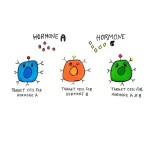
Understanding the difference between palliation and suppression is important before the physician actually starts the treatment of the disease.
When a patient comes to the physician with the complain of pain, discomfort or distress, what will he expect the most from the doctor?
You guessed right,
To get rid of those disease symptoms.
But of course, not by harming him more afterwards.
It is physician’s duty to decide the line of treatment that is truly beneficial for the patient as a whole.
Read in detail about what is palliation in homoeopathy and then compare it with the theory of suppression in homoeopathy.
After understanding palliation and suppression properly you will be able to decide curative way of treatment.
Learn the difference between palliation and suppression on some below mentioned points.
Table of Contents
ToggleWord meaning
Palliation: (PA-lee-AY-shun) to relieve, to alleviate or to ease.
Suppression: (suh-preh-shun) to press down or to stop forcibly.
Definition
Palliation: Temporarily relief of the most annoying symptoms of the disease in order to ease the distressed state of patient.
Suppression: Forcible removal of disease manifestations before the disease itself is cured.
Principles
Palliation: CONTRARIA CONTRARIS CURANTER or “Opposite cures opposite”.
Suppression: Totally against the “Hering’s law of cure”.
Read Hering’s law of cure in detail by following the link.
Ways/methods
Palliation:
- By homoeopathic medicines
- By other methods
Suppression:
- Natural suppression
- Artificial suppression
When do we require?
Palliation:
- Most urgent cases with risk of life
- Incurable cases with advanced pathology
- Absence of vital organs
- Too weak vital force
Suppression: Not advisable on any condition.
Is cure possible?
Palliation: Cure is not possible
Suppression: Disease becomes incurable one
Bad effects
Palliation: Disease may reoccur (may with more intensity).
Suppression: Disease get wrong direction of cure.













Leave a Reply